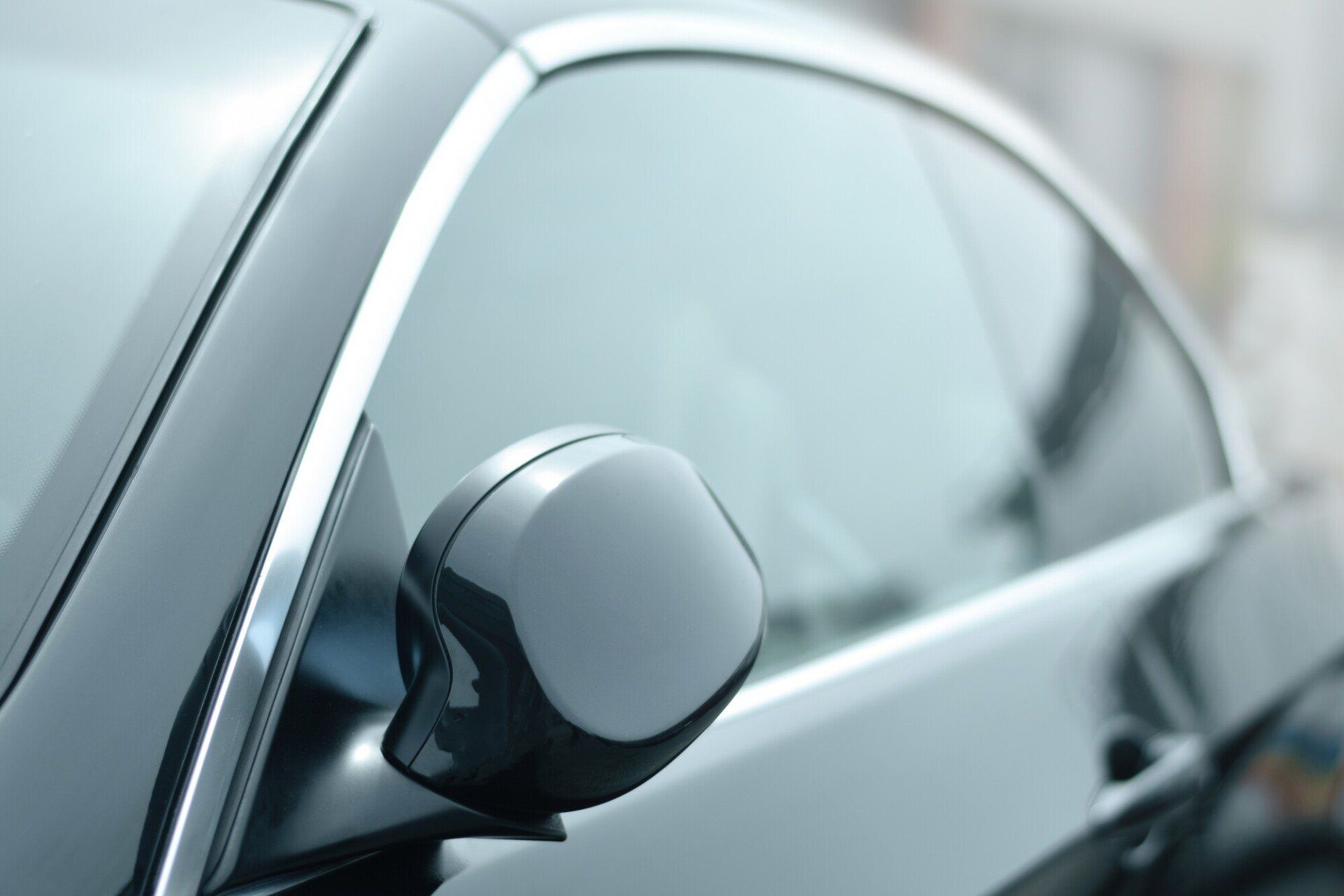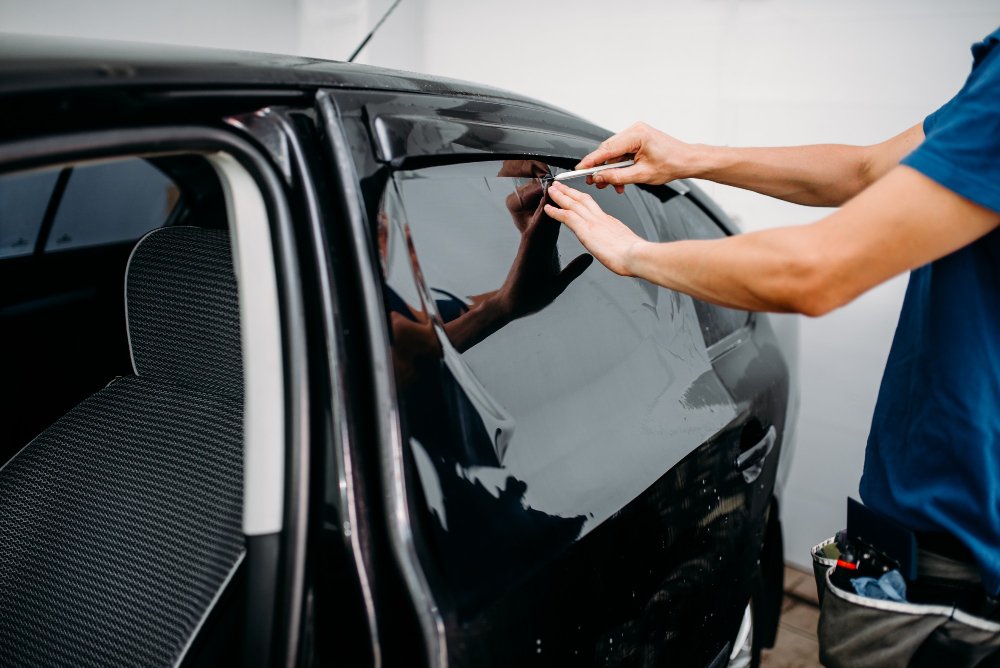Whatever You Required to Know About Automobile Window Tinting for Your Automobile
Automobile home window tinting is a sensible enhancement for several automobile proprietors. It uses benefits such as enhanced convenience and energy performance. Various color films satisfy different requirements and preferences. Nonetheless, recognizing lawful policies and selecting the ideal color percentage is essential. The setup process and appropriate upkeep likewise play substantial functions in ensuring the durability of the color. What various other elements should one take into consideration before choosing on window tinting?
Benefits of Automobile Home Window Tinting
Although some automobile proprietors might neglect it, car home window tinting deals countless benefits that boost both the driving experience and the car's long life. Among the main advantages is the reduction of warm build-up inside the automobile, enabling an extra comfy adventure, especially during heat. This can lead to lowered dependence on a/c, enhancing fuel efficiency.Additionally, window tinting offers security against unsafe UV rays, which can create skin damages and discolor indoor products gradually. By obstructing these rays, the color assists protect the car's interior and preserve its resale value.Moreover, tinted windows can improve personal privacy and protection, as they make it more hard for outsiders to see inside the lorry. This included layer of security can deter potential burglary. On the whole, automobile window tinting functions as a practical financial investment that adds to the automobile and both comfort's total health.
Kinds Of Home Window Tint Films
When considering auto home window tinting, lorry owners experience a variety of window color movies, each developed to fulfill certain needs and choices. The initial category is colored window movie, which offers a basic level of personal privacy and UV security while being cost-effective. Next off, metalized films integrate tiny metallic fragments, showing warmth and boosting resilience, although they may hinder electronic signals.Ceramic films are one more alternative, recognized for their superior warm denial and clarity, providing high efficiency without signal disturbance. Finally, hybrid movies incorporate features of colored and metalized movies, striking a balance in between expense and functionality. Each sort of home window tint film provides distinct benefits, permitting car owners to pick based on their specific requirements, such as warmth budget, control, and appearance considerations. Understanding these alternatives is essential for making a notified choice pertaining to auto window tinting.
Recognizing Lawful Rules
When thinking about auto home window tinting, it is vital to understand the legal laws that control tint darkness limitations and windshield tint needs. These guidelines can vary considerably from one state to another, affecting what is permissible for vehicle proprietors. Familiarizing oneself with these regulations warranties conformity and aids stay clear of possible penalties or charges.
Tint Darkness Restrictions
How can lorry proprietors assure they continue to be certified with regional regulations pertaining to home window tinting? Comprehending color darkness restrictions is vital. Each state has details laws that dictate the permitted levels of darkness for window colors, which are measured by Visible Light Transmission (VLT) portions. Generally, front-side home windows have to enable a greater portion of light contrasted to rear windows. As an example, some states might enable just 30% VLT for front home windows, while the rear home windows may be permitted to have especially darker tints. To guarantee conformity, vehicle owners must speak with state guidelines or neighborhood police for exact info. In addition, certified tinting professionals can offer insights concerning lawful limitations, making sure that lorry owners make educated choices.
Windshield Tint Rules

State-Specific Regulations
Guiding via the landscape of state-specific regulations regarding car window tinting needs cautious interest to information, as laws can vary significantly from one state to one more. Each state has its very own collection of rules governing permitted tint portions, types of materials, and positioning on automobile home windows. For example, some states allow darker colors on back windows while forbiding them on front home windows, while others have more stringent general limitations. In addition, particular states mandate using details products or need certification from installers. Failing to follow these guidelines can lead to fines or the requirement to get rid of non-compliant tint. Vehicle proprietors must consult their state's Department of Motor Vehicles or pertinent authority to ensure adherence to local laws.
Picking the Right Color Portion
When picking the ideal tint percent for a car's windows, one have to take into consideration different factors that influence both visual appeals and functionality. Color percentages generally vary from 5% to 70%, with lower percentages offering darker tones and higher percentages permitting a lot more light in. A darker tint can boost personal privacy and decrease glow, while a lighter color can maintain visibility and abide by lawful restrictions.Furthermore, personal choice plays a considerable duty in this choice. Some individuals might choose the smooth look of darker tints, while others could favor an extra open, ventilated feeling. Furthermore, the lorry's purpose must be taken right into account; as an example, those using their lorries for industrial purposes might select lighter tints to preserve a specialist look.Ultimately, the best tint percent equilibriums individual design, comfort, and adherence to regional guidelines, ensuring a gratifying tinting experience.
The Installation Process
An effective installment of home window color calls for mindful focus to information and the right devices. The procedure commonly starts with thorough cleaning of the windows to remove dust, dirt, and particles, guaranteeing proper bond of the movie. Once the surface areas are prepared, the installer actions and website link reduces the color film to fit each window accurately.Next, the film is placed on the glass, often using a remedy to promote simple change and protect against air bubbles. Heat is often related to the film to adhere it to the home window's contours, enhancing its look and durability. After validating a seamless fit, the installer diligently cuts any type of excess movie along the edges.Finally, the installer checks for flaws and verifies all edges are safe and secure. This thorough strategy is essential not just for appearances yet also for achieving the wanted performance advantages of window tinting, such as UV defense and warmth reduction.
Upkeep and Treatment for Tinted Windows
Proper upkeep and treatment are necessary for preserving the honesty of colored home windows. Efficient cleansing methods, the evasion of damaging chemicals, and normal evaluations for damages play important duties in guaranteeing longevity. By complying with these standards, vehicle proprietors can keep the functional and aesthetic advantages of their home window tint.
Cleaning Up Strategies for Tint
Preserving the quality and durability of colored windows needs details cleaning methods customized to the film's delicate surface. It is essential to utilize a soft microfiber towel to avoid scratching the color while cleaning. A gentle remedy of water and a couple of drops of mild meal soap can properly remove dirt and gunk. It is advisable to use the cleaning service to the fabric, instead of directly onto the tinted surface, to stop dampness from permeating into the sides of the film. Mild, round motions ought to be utilized to cleanse the windows thoroughly. Routine cleaning assists preserve exposure and protects against buildup, guaranteeing that the tint stays in prime problem with time. Adhering to these methods will expand the life of colored home windows.
Preventing Unsafe Chemicals
Although many household cleansing items work on different surface areas, they can posture substantial threats to colored windows. Chemicals such as ammonia, bleach, and certain solvents can weaken the color movie, resulting in staining and peeling. People ought to select pH-balanced cleansers particularly made for tinted home windows. Furthermore, making use of soft sites microfiber towels will assist prevent scrapes and preserve the tint's stability. Regular maintenance is vital; subsequently, avoiding harsh scrubbing or abrasive products is crucial. It is a good idea to read item labels meticulously to confirm compatibility with window colors. By selecting the ideal cleaning options and tools, automobile owners can protect the look and capability of their tinted home windows, ensuring a much longer lifespan and height performance.
Checking for Damages
Routine inspections of tinted windows are essential for determining any kind of signs of damage that might endanger their efficiency and look. Owners must seek bubbling, peeling, or staining, as these concerns can indicate poor setup or direct exposure to find more info dangerous elements. It is a good idea to check the edges of the movie where peeling off may inspect and start for any kind of scratches that might affect exposure. In addition, ultraviolet (UV) rays can cause the tint to deteriorate gradually, so checking its efficiency in obstructing UV light is crucial. If any type of damage is discovered, timely activity must be taken, which might consist of specialist fixing or substitute. Keeping tinted windows not only enhances aesthetics but likewise assurances proceeded security for both guests and the lorry inside.
Typical Myths About Window Tinting
What misconceptions surround home window tinting for lorries? Lots of people believe that all home window tints are prohibited, however policies differ by state, permitting for certain levels of tinting. Another usual misconception is that darker colors obstruct more warm; however, the effectiveness of window movies depends on their technology instead of darkness. Some people additionally assume that window tinting is only for aesthetic appeals, ignoring its benefits, such as UV security and glare decrease. In addition, lots of assume that home window tinting will harm their car's glass, but properly used tints can really enhance glass resilience. Finally, there is an idea that window colors block exposure, yet top quality movies are developed to maintain clear sightlines while supplying personal privacy. Recognizing these myths aids consumers make educated choices relating to window tinting, guaranteeing they enjoy the complete series of advantages it offers.
Regularly Asked Questions
Exactly How Lengthy Does Window Tinting Commonly Last?
The longevity of home window tinting varies based on aspects such as installment quality, film kind, and ecological conditions. Typically, top notch tint can last anywhere from 5 to 10 years before needing substitute or reapplication.
Can I Get Rid Of Home Window Color Myself?
Removing window color oneself is feasible, though it might be challenging. Individuals must make use of a warmth resource and adhesive remover to relieve the procedure, however care is suggested to avoid damaging the car's glass or interior.
What Equipment Are Needed for DIY Window Tinting?

Will Home Window Tinting Damages My Vehicle's Glass?
Window tinting, when used appropriately, usually does not damage a vehicle's glass. Nevertheless, inappropriate installment or low-quality movies might lead to peeling, bubbling, or scratching, potentially jeopardizing the stability of the glass gradually.
Can Tinted Windows Influence My Vehicle's Resale Worth?
The impact of colored windows on a vehicle's resale worth can differ. While some buyers value the included privacy and UV protection, others might view it as a prospective concern, potentially impacting resale positively or adversely. When taking into consideration automobile window tinting, lorry owners run into a range of window tint movies, each developed to satisfy particular needs and preferences. When considering automobile home window tinting, it is vital to recognize the lawful policies that govern tint darkness restrictions and windshield tint requirements. Typically, front-side home windows should allow a greater portion of light contrasted to back windows. Some states might enable only 30% VLT for front home windows, while the rear home windows may be permitted to have notably darker colors. Some states permit darker colors on rear home windows while restricting them on front windows, while others have stricter total limitations.